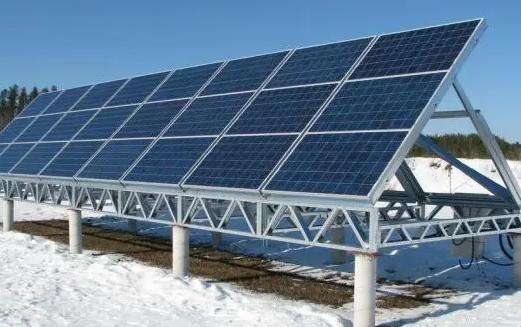First of all, welcome to Xinjiang and live in Hami!
Hami has a typical continental climate.
1. The climate is very dry, with annual precipitation of around 100mm, meaning it rains and snows several times a year.
2. It is windy and dusty from March to May
3. Temperature: the highest is around 40 degrees in summer and the lowest is minus 28 degrees in winter; p>
4. Air quality is good, depending on where you live. In the suburbs, the sky is blue every day.
How many megawatts does a photovoltaic plant typically have?
The daily variation characteristics of solar radiation in Hami are as follows:
Hami is a city in Xinjiang. A city in the Uygur Autonomous Region, located on the eastern edge of the Tarim Basin. Due to its unique geographical location and climatic conditions, the characteristics of variatiHami's diurnal solar radiation has unique characteristics.
The following is an in-depth knowledge of the diurnal variation characteristics of Hami's solar radiation:
1 Influence of geographical location
strong><. /p > Hami is located in an arid zone and in a basin. This geographical location means that Hami receives relatively strong solar radiation. Most of the time, the sky in Hami is relatively clean with less cloud cover, which favors direct solar radiation reaching the surface. 2. Daylight hours and seasonal changes Hami has longer daylight hours, especially in summer. In summer, the direct angle of the sun is small and the direct point of the sun is located in the northern hemisphere, which results in stronger daytime solar radiation in Hami in summer. In winter, the direct point of the sun is located in the hemispheresouth, resulting in a larger direct sunlight angle and relatively low solar radiation during the day. 3. Influence of meteorological factors Hami has a dry climate and a low content of water vapor in the air. Due to the absorption and scattering of solar radiation by water vapor, Hami's dry climate allows direct solar radiation to reach the surface. 4. Daily radiation and nighttime radiation Nocturnal solar radiation in Hami also has certain characteristics. Due to the dry climate and topography of the basin, the radiation heat dissipation effect from the surface to the air at night is weak, resulting in lower nighttime temperatures. This radiative cooling effect is particularly important in winter in Hami. 5. Altitude sickness Hami is located in part of the pXinjiang plateau, at high altitude. Due to the higher altitude and lower atmospheric density in plateau areas, the penetration of solar radiation is greater. This also means that the Hami region is relatively more sensitive to solar radiation. 6. The impact of solar radiation on temperature Solar radiation is an important factor in the Earth's energy balance. In a place like Hami, strong solar radiation directly affects the surface temperature. Direct sunlight during the day quickly warms the soil surface, causing the temperature to rise. At night, due to the weak heat dissipation effect of radiation, the temperature drops quickly. 7. The impact of climate change on solar radiation With global climate change, temperature, humidity and other elementsMeteorological conditions in the Hami region can change, thus affecting the distribution and intensity of solar radiation. Monitoring and analyzing this change can help better understand the response and adjustment of the climate system. 8. Potential for using solar energy Due to the relatively strong solar radiation in Hami, the Hami region has great potential for using solar energy. As a clean and renewable energy source, solar energy offers a wide range of application prospects in climatic conditions like Hami, including solar water heaters, photovoltaic power generation, etc. 9. Scientific research and monitoring The solar radiation characteristics of Hami are of great importance to meteorological scientific research and climate monitoring. By monitoring and analyzingSolar radiation data, scientists can better understand local climate characteristics and provide a scientific basis for weather disaster warnings, agricultural production, etc. In general, the diurnal variation characteristics of Hami's solar radiation are the result of a combination of factors, including geographic location, season, meteorological factors, etc., all of which play a role . Understanding these features provides a better understanding of the climatic environment of the Hami region and also provides a basis for related scientific applications and research.
How about Hami Luxin Guoneng Thermal Power Co., Ltd. ?
Photovoltaic plants are generally 20 megawatts. With the orderly progress of the construction period, the installation work of the second part of 15 MW of solar equipment of the CP photovoltaic power plantI Xinjiang Hami are in full swing. The solar cell array should be connected to the grid to produce electricity. at the end of June, plus the first part of 5 MW which will be connected to the grid at the end of 2011. MW, the Hami photovoltaic plant is about to reach the planned electricity production capacity of 20 MW.
Hami Luxin Guoneng Thermal Power Co., Ltd. is another limited liability company registered in Hami City, Xinjiang Uygur Autonomous Region on June 10, 2015. Its registered address is located in Sandaoling People's Government, Hami City, Hami Prefecture, Road No. 1 from Xinjiang.
The social credit code/unified registration number of Hami Luxin Guoneng Thermal Power Co., Ltd. is 916522003288966480. The legal entity is Chen Jiping. The company is currently in operation.
The business scope of Hami Luxin Guoneng Thermal Power Co., Ltd. is as follows: construction and operationion of thermal, wind and solar power generation projects; power generation service activities (including initial project development, technology consulting, design, construction, installation and commissioning, professional operation, repair and maintenance services) ; In this province, the current share capital of businesses is average.
View more information about Hami Luxin Guoneng Thermal Power Co., Ltd. via Baidu Enterprise Creditinformation.














